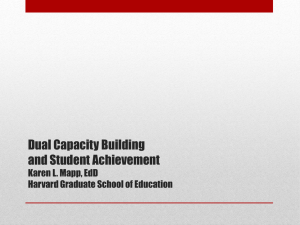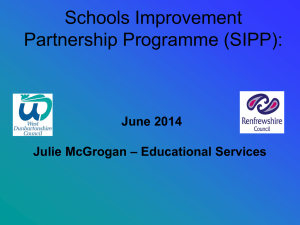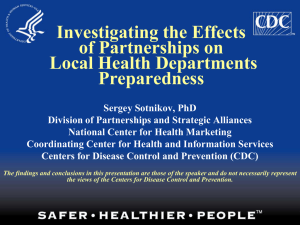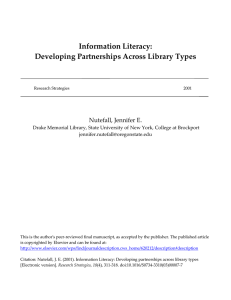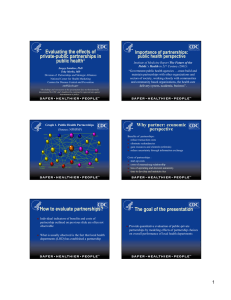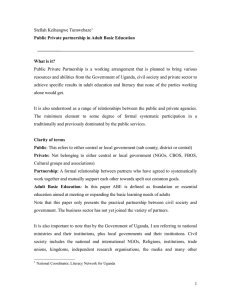pptx
advertisement
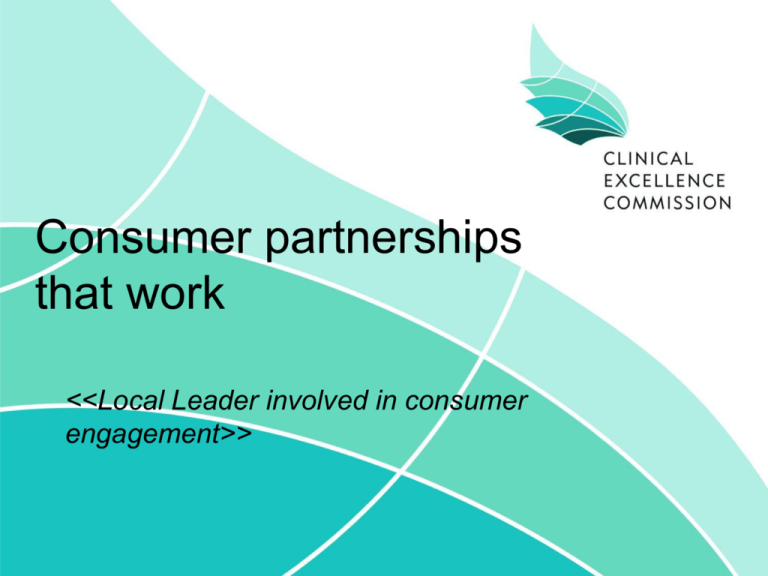
Consumer partnerships that work <<Local Leader involved in consumer engagement>> The Challenge for health services Recent survey of over 3500 hospital/health senior executives across Australia. From the survey, 39.2% of the respondents said that Partnering with Consumers is by far the most challenging aspect of the NSQHS standards. Survey respondents: public 75.3%, private 24.7%. Source: Criterion Models for Consumer Partnerships • Patients as Advisors (PFAC, etc) • Patients as Teachers (service design & professional education) • Patients Accelerating Practice Change • Service improvement initiatives with priorities identified through patient feedback • Patients informing Policy development Consumer partnerships • Determine attributes: ‘fit for the job’ • Aim to improve patient care through positive contribution • Objective and constructive manner • Willing to speak up -in the right place in their journey • Adequately prepared – orientation;expectations • Cultural fit – organisation/committee believes consumer involvement is integral to QI • Responsive: suggestions acted upon Power of the n=1 Using individual patient stories to drive change Political tactic Powerful tool for engendering emotion Use to complement clinical focus <<Your own LHD examples??>> Challenges? • Squeaky wheel syndrome • Advocacy Vs sharing experience • Supporting ‘seat at the table’ • Which ‘consumers’ have the time? Which core action item in Standard 2 had the highest ‘Not Met’ rate?.... 2.2.2 Consumers actively involved in decision making about safety & quality 49% - Highest ‘not met’ rate in ACHS pilot audit of standards with 46 hospitals Building partnerships ‘Fear of the unknown’ by providers is the greatest barrier to involving patients in safety improvement work Robert Wood Johnson Foundation Consumer engagement in Safety & Quality (at CEC) (S2.2) “The consumer tends to see the problem and solution so much more simply and they ask reasonable questions – whereas the healthcare professional tends to drown in the complexity / what cannot be done” “Helps to focus a clinical group on the purpose of initiatives” Perceived Role of CEC Consumer Advisors in Safety & Quality Access to orientation and training for consumers (S2.3) Consumer Safety & Quality Training – open to LHD Consumers on S&Q Committees since 2012 Caregivers and patients co-creating a shared agenda for improvement Strategies for scaling up consumer engagement: o Focus Groups with patients, families, staff, etc. o Patient and Family Advisory Councils o Patient engagement on safety, quality and other organizational committees o Patient participation in hiring and evaluation o Patients as faculty o Patients to develop/act in simulations for staff training Culture Assessment: Listening to the voices of patients, families and caregivers Personalize Humanize Demystify The ‘generic’ patient? • About 60% of Australians (15-74yrs) have limited health literacy* • 1 in 3 NSW residents were born overseas • 1 in 4 speak a language other than English at home *2006 Adult Literacy and Life Skills Survey, ABS Consumer feedback on patient information publications (S2.4) What is your health services policy on health literacy? How are you assessing and breaking down barriers for patients? How are you addressing health literacy barriers? Sharing patient experiences of care <<Local patient/family member/carer>> Leaders engaging staff Organisational story telling <<Local leader>> The power of patient stories What does Dennis Quaid have to do with patient stories? Story Power: The secret weapon Quaid D, Thao J, Denham C. (2010) Journal of Patient Safety 6(1): 5-14. • Study of 675 hospitals where safety leaders showed staff a patient story highlighting failed communication & team work. • 85% perceived that viewing the patient story had resulting in the saving of lives or had a positive effect on patient care • Stories can inspire improvements in quality & safety Experiential knowledge • Of patients – stories and narratives • Of carers – culture of ‘health talk’ in families* • Of health care professionals – sharing stories, tacit learning models *(Lindenmeyer A (2011) The family is part of the treatment really. Health. 15: 401-415.) Leading organisations Kaiser Permanente, the largest health maintenance organization in the U.S., using storytelling as part of its long-range growth plan In every story I have heard, good teachers share one trait: a strong sense of personal identity infuses their work. - Parker J. Palmer Great leaders use personal stories • Howard Gardner – Leading Minds • Couch personal stories in the language of the past to gain commitment • Issues of identity • Connect with original values The story is central Leaders tell stories about themselves and their groups/clans, about where they are coming from and where they are heading, about what is to be feared, struggled against and dreamed about. Howard Gardner Stories convey the mission Sharing a patient-based vision • Illustrate your values in your personal story • Gain staff commitment (beyond a ‘control’ culture) • Access discretionary effort by staff • Reconnecting staff with ‘original values’ • Why did you start to work in health care? CLIFF HUGHES VIDEO Engaging clinicians and patients/family in improving care <<Director of Nursing or Director of Medical Services>> Interactive Discussion Delivering Training Locally <<local educator>> Summation <<Chief Executive/DCG>>


